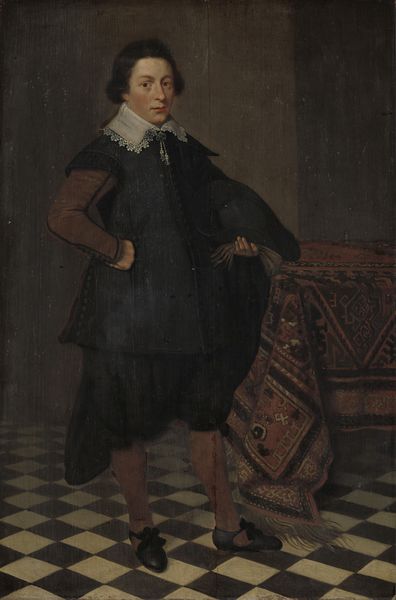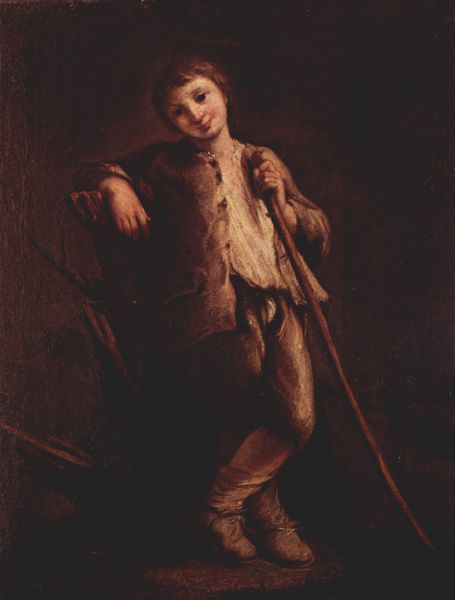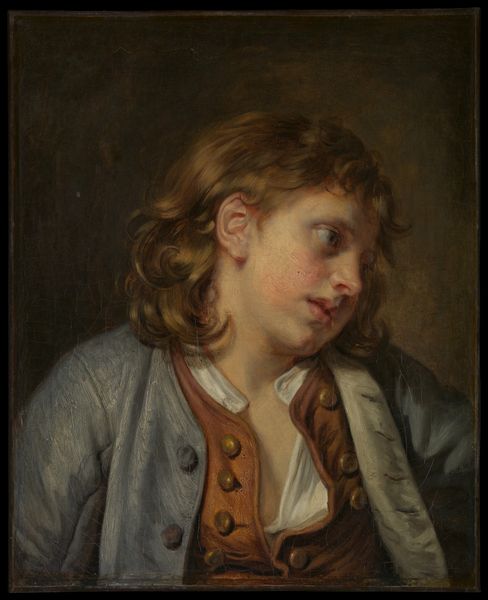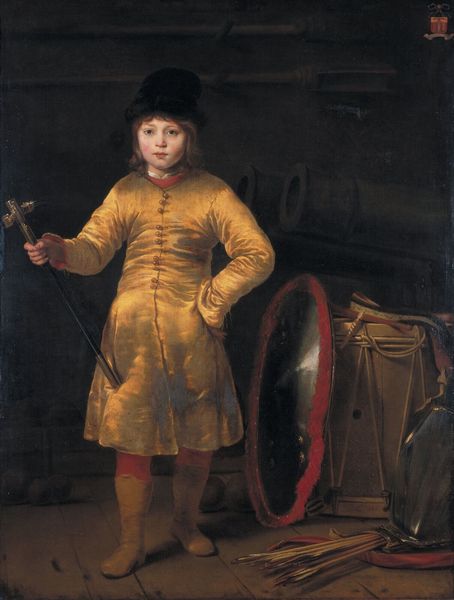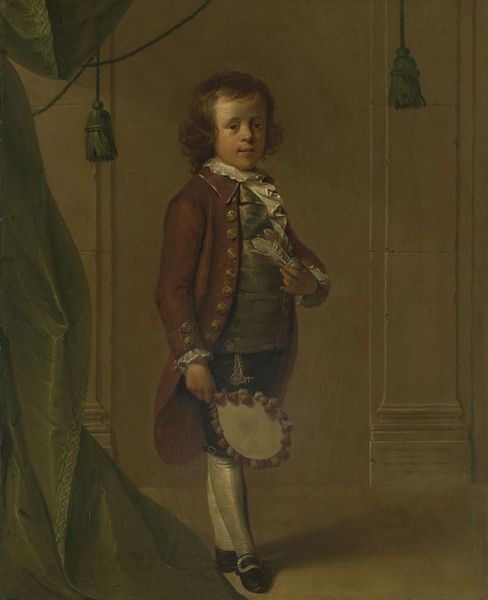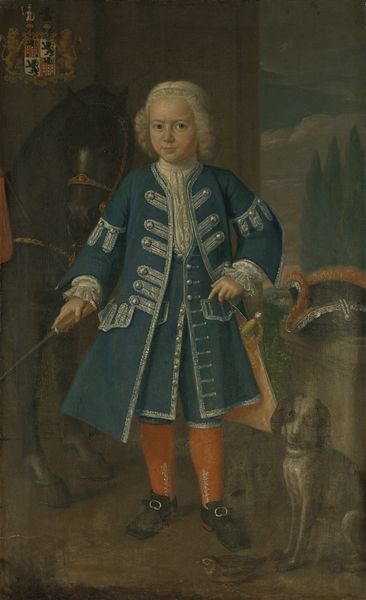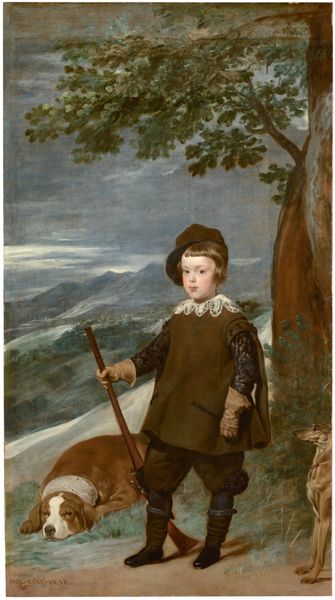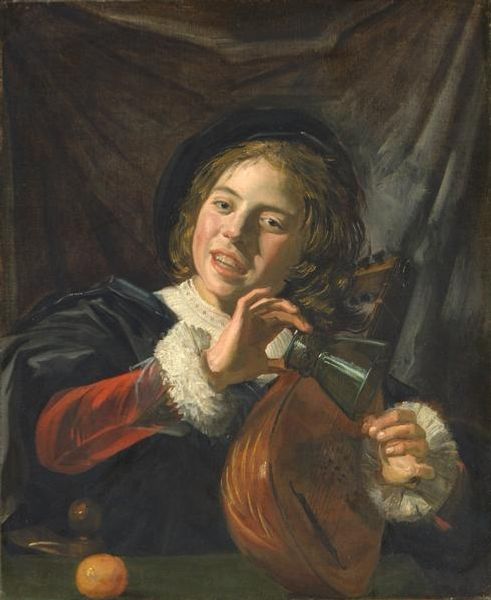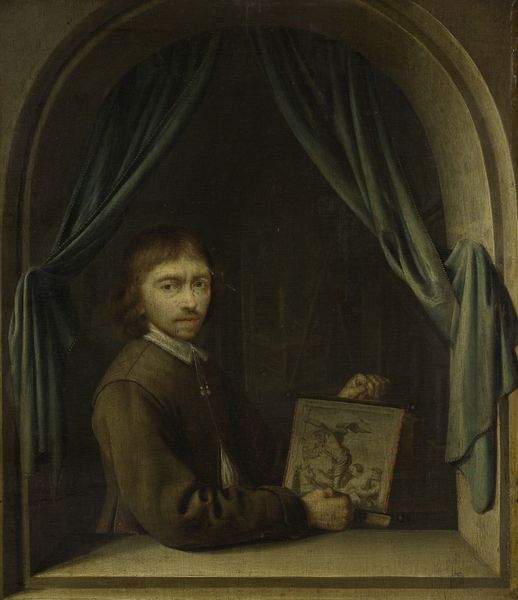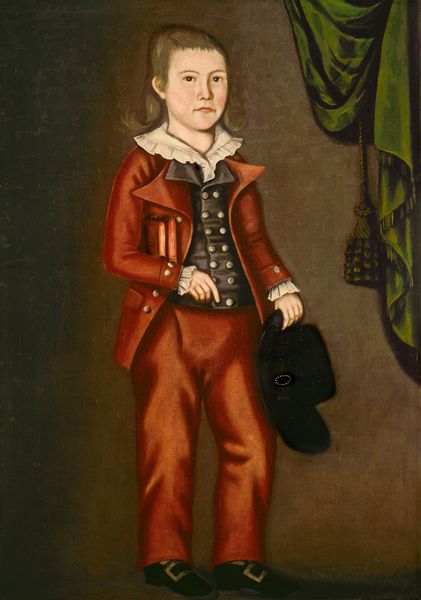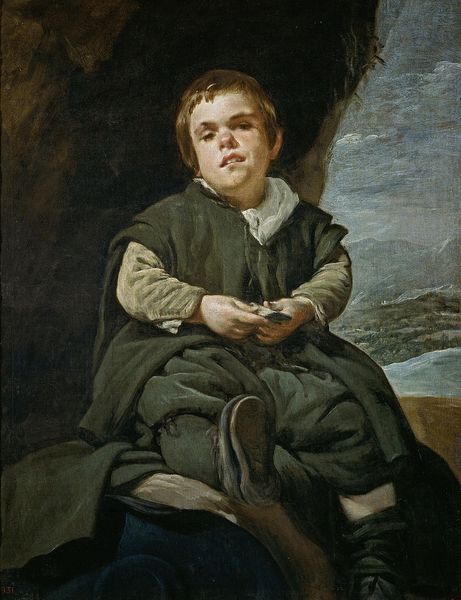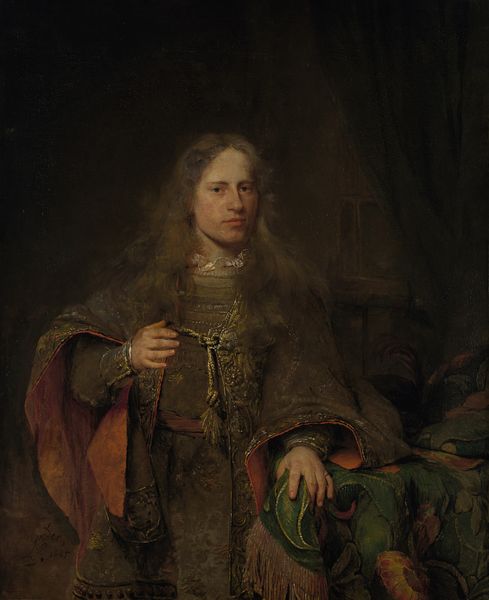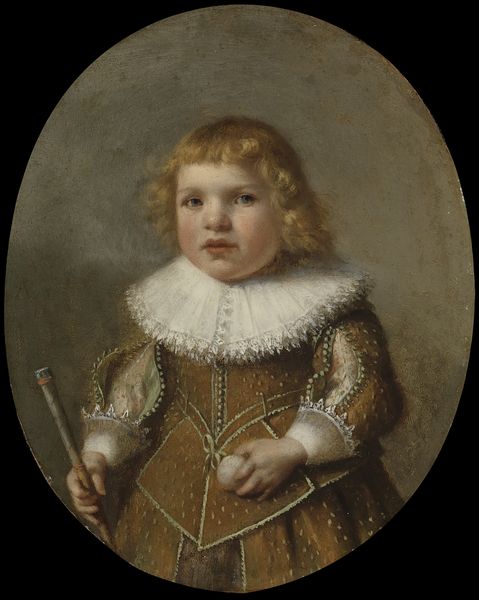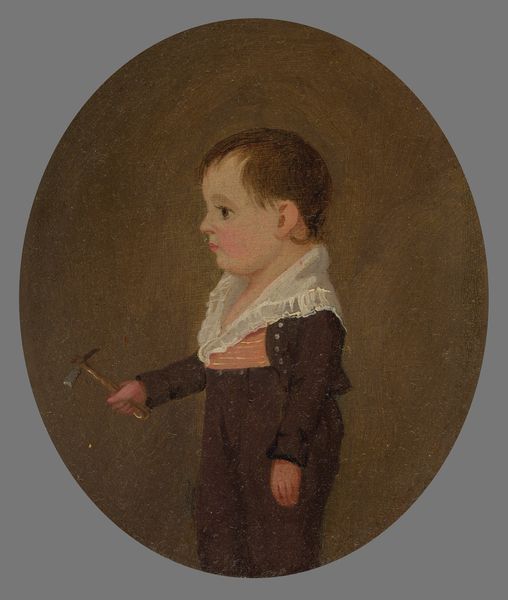
painting, oil-paint
#
portrait
#
baroque
#
dutch-golden-age
#
painting
#
oil-paint
#
oil painting
#
genre-painting
Dimensions: height 49 cm, width 39 cm
Copyright: Rijks Museum: Open Domain
Curator: Looking at this canvas, painted sometime between 1650 and 1700, we see Johannes Spilberg's "Portrait of Harmen van de Poll, Son of Jan van de Poll". What catches your eye? Editor: The stillness, definitely. There's an air of staged nonchalance, but it reads more as forced composure. Is this meant to communicate status through relaxed demeanor, or are we seeing something else? Curator: Indeed, the posture feels deliberate. His relaxed pose against the chair is intended to signal privilege and refinement, but the very act of staging betrays a certain social anxiety of the time, the ever-present need to perform wealth. The slightly foppish hat left aside further suggests aristocratic life. Editor: It makes you wonder about Harmen himself. This idea of youth being sculpted to perform and carry the weight of expectations of family. Is he merely reflecting his upbringing or actively buying into this construct? The colors are also really muted overall, mostly browns and grays save for the vivid red chair. Is that to emphasize wealth, power, or a hint of the passion this boy is masking? Curator: The red definitely pops against the overall earth tones, directing our gaze. The painting employs what we now recognize from the Dutch Golden Age; realism with touches of idealism, to convey wealth but, also, moral virtue. This also may signify strength, passion and the vitality desired of him. But yes, one cannot ignore the codes. Symbols offer both presence and absence. This portrait reveals as much about society's expectations as it does about young Harmen. Editor: Right, and within that constructed reality, where does identity truly reside? Was Harmen given any agency or self determination beyond the confines of familial aspiration, I wonder. This image can be studied again and again through time! Curator: And it echoes the questions of constructed identity we are still grappling with today. Each generation views an artifact anew and through changing social lenses and changing times, such that new truths are revealed to us with further viewings. Editor: Precisely. Context shifts, revealing previously hidden layers of meaning. So portraits like this become active participants in an ongoing conversation about ourselves and the world.
Comments
No comments
Be the first to comment and join the conversation on the ultimate creative platform.
